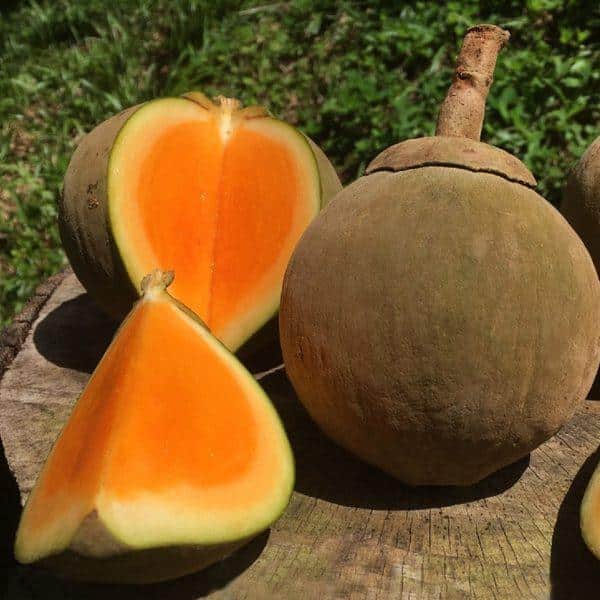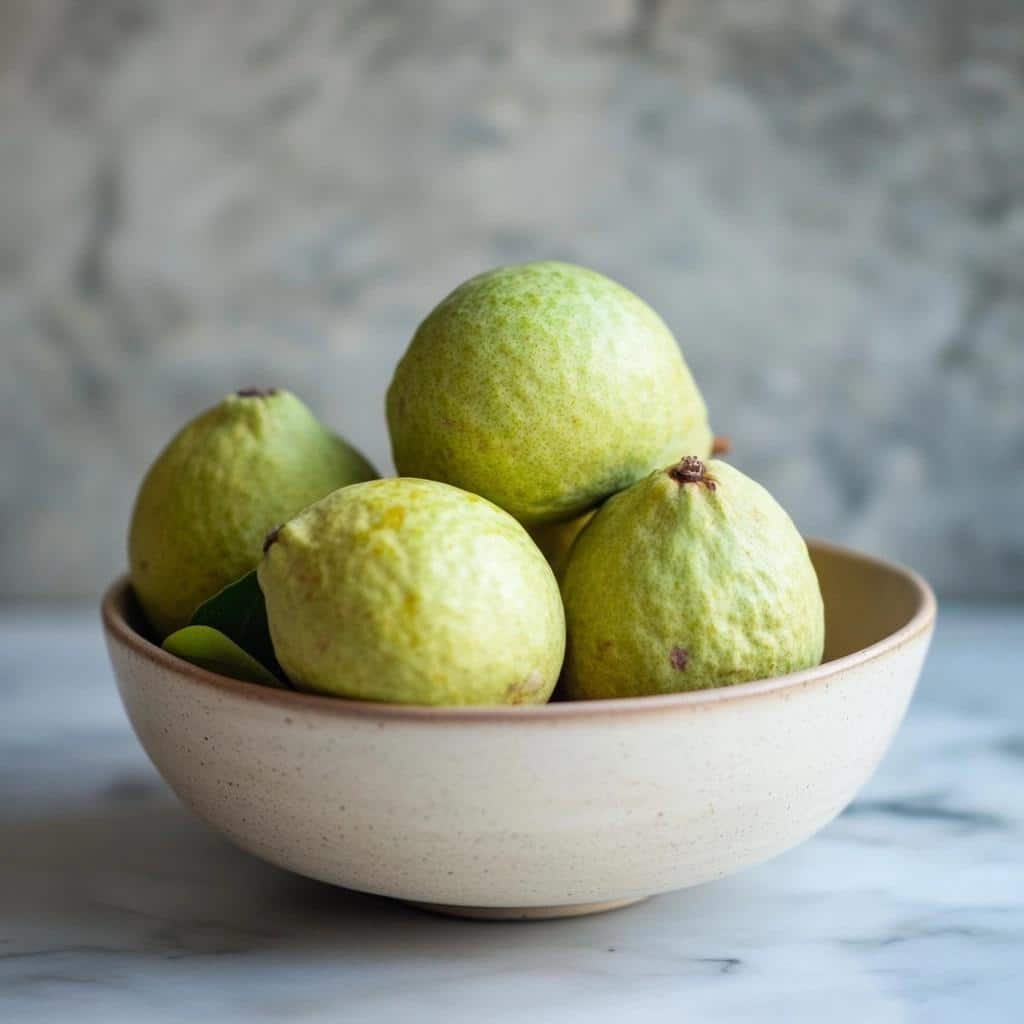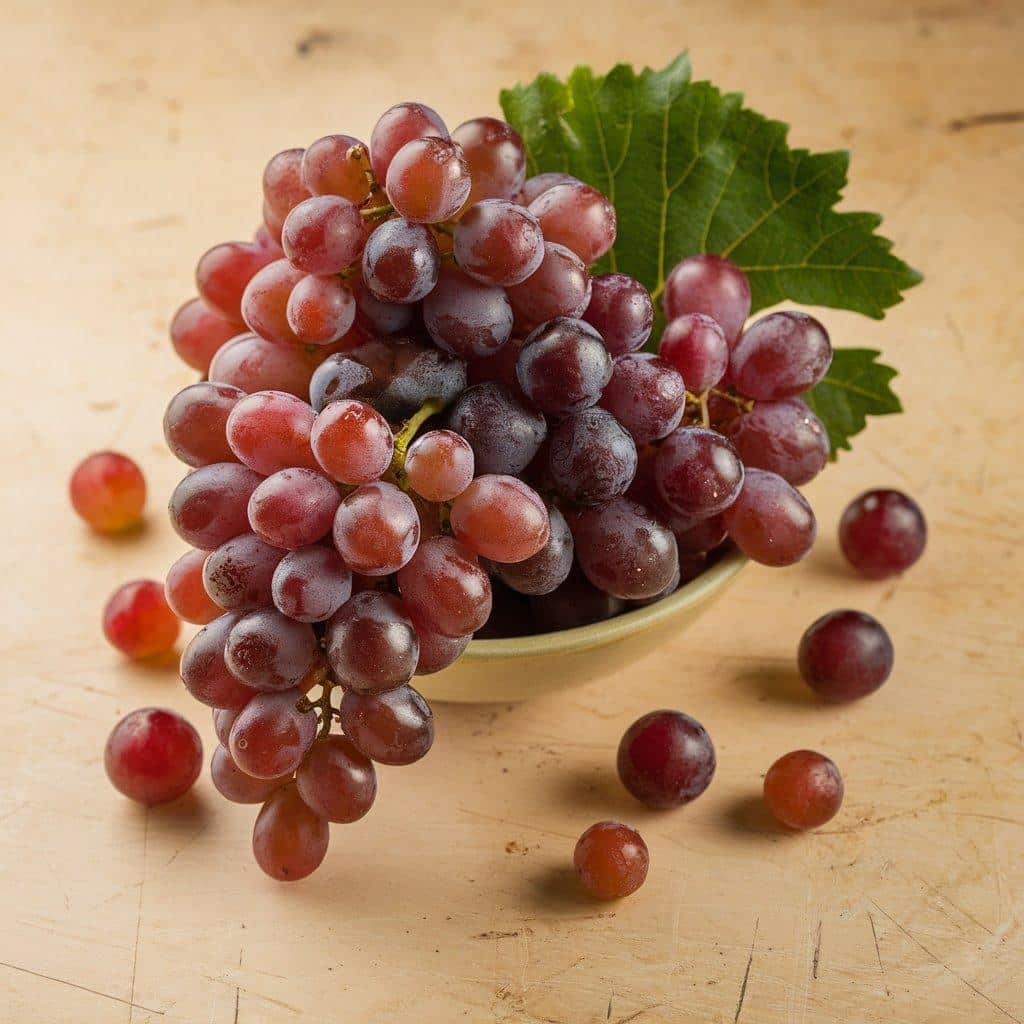
Finding fruits for each letter of the alphabet can be tricky, especially when you reach uncommon letters like Q. Many people struggle to name even one fruit that starts with Q.
This list makes it simple to learn about unusual and interesting Q-fruits from around the world. You’ll find familiar favorites alongside lesser-known options that might add variety to your diet.
We’ve gathered 16 different fruits that begin with Q, complete with brief descriptions and basic facts about each one.
From the familiar quince to rare varieties you may have never heard of, this guide helps you understand these distinctive fruits and their uses in cooking and eating.
Unique Fruits That Start with Q
1. Quince

Quince is native to the Mediterranean and parts of Asia. This fruit has a golden-yellow skin and a pear-like shape, with a tough and aromatic texture.
A fascinating fact about quince is its historical significance—it has been cultivated for over 4,000 years and symbolizes love and fertility in many cultures.
- Taste: Tart and astringent when raw, sweet and fragrant when cooked.
- Uses: Commonly used in jams, jellies, desserts, and stewed dishes.
- Nutritional Value: High in dietary fiber and vitamin C.
2. Queen Anne Cherry

Queen Anne cherry, also known as Royal Ann, originates from the United States, especially the Pacific Northwest.
It has a light yellow color with a red blush and is small and round. Interestingly, this cherry variety is often used to make the iconic maraschino cherries.
- Taste: Sweet, juicy, and mildly tangy.
- Uses: Enjoyed fresh, and in pies, jams, and maraschino cherries.
- Nutritional Value: A good source of antioxidants, potassium, and vitamin C.
3. Quandong

Quandong, or native peach, hails from Australia. It is bright red, small, and round in appearance. A fun fact about quandong is that its seeds are not only used as food but also crafted into ornamental beads or ground into flour.
- Taste: Tart and tangy, resembling rhubarb or apricot.
- Uses: Popular in jams, sauces, desserts, and Australian bush tucker dishes.
- Nutritional Value: Rich in vitamin C and antioxidants.
4. Queen Forelle Pear

Queen Forelle Pear is thought to have originated in Germany and is now widely grown in Europe and the United States.
This small, bell-shaped pear has smooth, yellow-green skin with red speckles. A fun fact about the Forelle pear is that its name means “trout” in German, inspired by its speckled appearance, which resembles a fish.
- Taste: Sweet, juicy, and mildly crisp.
- Uses: Eaten fresh, added to salads, or used in desserts and jams.
- Nutritional Value: High in fiber, vitamin C, and antioxidants.
5. Queen Tahiti Lime

Queen Tahiti Lime is native to tropical and subtropical regions, particularly in Southeast Asia and Central America.
It has a bright green, smooth skin and a slightly oval shape. A fascinating fact about Tahiti lime is that it is seedless and often used as a culinary favorite due to its mild, versatile flavor.
- Taste: Mildly tart with a refreshing citrus flavor.
- Uses: Popular in beverages, marinades, and as a garnish.
- Nutritional Value: High in vitamin C and antioxidants, with low calories.
6. Queen Apple

Queen Apple, native to New Zealand, is a rare variety known for its sweetness and crispness.
The apple is medium-sized, with bright red skin and occasional yellow patches. A fun fact about Queen apples is that they are often called the “royal fruit” for their premium taste and appearance.
- Taste: Sweet, crisp, and slightly tangy.
- Uses: Ideal for fresh snacking, baking, and juicing.
- Nutritional Value: Rich in fiber, vitamin C, and natural sugars for energy.
7. Queen Palm Fruit

Queen Palm fruit originates from South America, particularly in Brazil and Argentina.
It is small, oval, and bright orange in color, with a fibrous outer layer. A unique fact about this fruit is that it is often eaten by birds and small mammals, playing a vital role in local ecosystems.
- Taste: Sweet and slightly nutty.
- Uses: Consumed fresh, fermented for beverages, or used in cooking.
- Nutritional Value: Contains natural sugars, fiber, and small amounts of vitamin A.
8. Queen Pineapple

Queen Pineapple is a smaller, sweeter variety of pineapple that originated in South America but is cultivated in tropical regions worldwide.
It has a vibrant yellow flesh and a spiny, golden-orange skin. Queen pineapples are often considered a delicacy for their unique sweetness and aroma.
- Taste: Intensely sweet with a hint of tanginess.
- Uses: Eaten fresh, in desserts, juices, and savory dishes.
- Nutritional Value: High in vitamin C, manganese, and bromelain enzymes.
9. Quararibea Cordata

Quararibea Cordata, commonly known as South American sapote, originates from Ecuador and Colombia.
It is a large, round fruit with bright orange skin and a soft, creamy interior. Due to its juicy, sweet pulp, this fruit is often referred to as the “Chupa-Chupa.”
- Taste: Sweet and custard-like with tropical notes.
- Uses: Eaten fresh or blended into smoothies and desserts.
- Nutritional Value: Rich in fiber, vitamin A, and natural sugars.
10. Quenepa

Quenepa, also called Spanish lime or mamoncillo, is native to northern South America and the Caribbean.
This small, round fruit has a green, leathery skin and a juicy orange pulp. A fun fact about quenepa is that its seeds can be roasted and eaten, adding to its culinary versatility.
- Taste: Sweet and tangy, with a hint of citrus.
- Uses: Eaten fresh, used in beverages, or made into preserves.
- Nutritional Value: Contains vitamin C, calcium, and phosphorus.
11. Queen Mangosteen

Queen Mangosteen, native to Southeast Asia, is often called the “queen of fruits” for its exquisite taste.
It has a thick purple rind encasing soft, white, segmented flesh. It is fascinating that mangosteen has been historically revered for its medicinal properties.
- Taste: Sweet, tangy, and tropical.
- Uses: Enjoyed fresh, in juices, and in desserts.
- Nutritional Value: High in antioxidants, vitamin C, and dietary fiber.
12. Quinault Strawberry

The Quinault strawberry is a variety of everbearing strawberry originating in the United States. It is known for producing large, sweet berries with a juicy texture.
This strawberry thrives in temperate climates and produces fruit throughout the growing season, making it a favorite for home gardeners.
- Taste: Sweet, juicy, and fragrant.
- Uses: Eaten fresh, in jams, desserts, and smoothies.
- Nutritional Value: High in vitamin C, manganese, and antioxidants.
13. Queen Victoria Plum

The Queen Victoria plum is a British cultivar of the European plum, known for its deep red or purple skin and sweet, juicy flesh.
This plum variety is widely loved for its tender texture and balanced sweet-tart flavor. A fun fact is that Queen Victoria plums are often used to make traditional English jams and preserves.
- Taste: Sweet with a mild tartness.
- Uses: Eaten fresh, in jams, jellies, and baked goods.
- Nutritional Value: High in vitamin C, fiber, and antioxidants.
14. Queensland Blueberry

The Queensland blueberry is native to Australia, particularly in the tropical and subtropical regions of Queensland.
It is a type of rabbiteye blueberry known for its dark blue, slightly larger berries compared to other varieties. Fun fact: These blueberries are highly valued for their rich flavor and are often cultivated for commercial purposes.
- Taste: Sweet with a subtle tang.
- Uses: Fresh, in pies, jams, smoothies, or as a topping for desserts.
- Nutritional Value: Rich in vitamin C, vitamin K, fiber, and antioxidants.
15. Queen Guava

Queen Guava, originating from tropical regions, is a superior variety of guava with smooth, green skin and a sweet, juicy interior.
A fun fact about Queen guava is that it is often referred to as a “superfruit” for its exceptional health benefits.
- Taste: Sweet with a tropical aroma.
- Uses: Enjoyed fresh, juiced, or in jams and desserts.
- Nutritional Value: High in vitamin C, fiber, and antioxidants.
16. Queen Nina Grape

The Queen Nina Grape is a premium cultivar that originated in Japan, and is known for its large, round berries with a deep purple to blackish skin and a smooth, crisp texture.
A fun fact about the Queen Nina Grape is that it is often considered a luxury fruit in Japan, and it’s cultivated with great care, often being sold in high-end markets and special gift boxes.
- Taste: Exceptionally sweet, juicy, with a slight tartness.
- Uses: Eaten fresh, in fruit salads, as a garnish, or in desserts.
- Nutritional Value: Rich in antioxidants, vitamin K, and vitamin C. It is also a good source of natural sugars and potassium.
Conclusion
Q-fruits may seem rare, but they bring unique tastes and health benefits to your kitchen. These 16 fruits show that even uncommon letters can lead to interesting food discoveries.
While some fruits like quince might be available at your local market, others may require a visit to specialty stores or international markets.
Why not try one new Q-fruit each month? Start with quince in your next pie, or experiment with queen apple in a fresh fruit salad. Your taste buds will thank you for the variety.
Want to explore more unique fruits? Leave a comment below sharing your experience with any Q-fruits you’ve tried.
We’d love to hear your cooking tips or serving suggestions.

